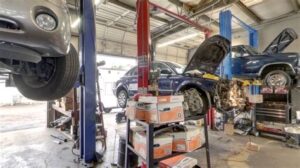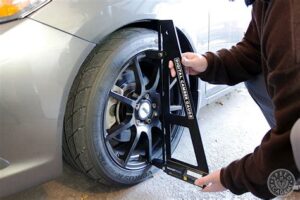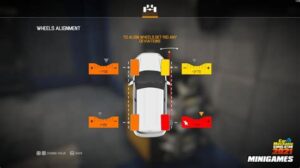Is your vehicle pulling to one side or experiencing uneven tire wear? If so, it may be time to consider whether your car needs an alignment. Proper wheel alignment is essential for ensuring optimal vehicle performance, safety, and tire longevity. In this article, we will explore key signs that indicate alignment issues, how to check tire wear patterns, and the overall impact of alignment on your car’s performance. Additionally, we’ll guide you through a basic alignment test you can perform at home and provide insights on when to seek professional assistance. Understanding these factors will not only enhance your driving experience but also save you money in the long run by prolonging the life of your tires and improving fuel efficiency. Let’s dive into the essential information you need to keep your vehicle in top shape!
Signs That Indicate Your Car Needs Alignment
Recognizing the signs that indicate your car needs alignment is crucial for maintaining vehicle performance and safety. Here are some common indicators:
- Your car pulls to one side: If you find yourself constantly steering to keep your car on a straight path, it may be a clear sign of misalignment.
- Uneven tire wear: Inspect your tires regularly; noticeable wear on one side of the tire tread compared to the other can signify alignment problems.
- Steering wheel off-center: When driving straight, if your steering wheel is not centered or is tilted to one side, this could indicate a need for alignment.
- Vibration in the steering wheel: A vibrating steering wheel while driving can also be a sign of alignment issues, especially if it occurs at higher speeds.
- Poor handling or responsiveness: If your vehicle feels sluggish or unresponsive when turning or changing lanes, it may be time to check your alignment.
By being aware of these signs, you can address alignment issues early on, ensuring your vehicle runs smoothly and safely. Regular checks are essential for prolonging the lifespan of your tires and enhancing overall vehicle performance.
How To Check Tire Wear Patterns For Alignment Issues
Checking tire wear patterns is crucial for determining if your vehicle needs an alignment. Uneven or unusual wear on your tires can indicate alignment problems. Here’s how to check for these issues:
- Visual Inspection: Start by examining each tire closely. Look for any signs of uneven wear, such as:
- Wearing on the edges (may indicate over-inflation)
- Cupping or scalloping (often a sign of worn suspension components or poor alignment)
- Excessive wear on one side (this could indicate misalignment)
- Tread Depth Measurement: Use a tread depth gauge to measure the depth across the tire. If one area is significantly shallower than the rest, it may indicate an alignment issue.
- Check for Vibration or Pulling: While driving, pay attention to any vibrations or if the car seems to pull to one side. These can be signs of misalignment affecting tire wear.
If you notice any of these patterns, it’s advisable to have your alignment checked by a professional to prevent further tire damage and ensure optimal vehicle performance.
The Impact Of Wheel Alignment On Vehicle Performance
Proper wheel alignment is crucial for maintaining optimal vehicle performance. When your car’s wheels are aligned correctly, it enhances several performance aspects that contribute to a safer and smoother driving experience.
First and foremost, how to understand the benefits of wheel alignment begins with improved handling. When wheels are aligned, they help the vehicle respond accurately to steering inputs, allowing for precise maneuvering around curves and during sudden stops.
Another significant impact of proper alignment is better fuel efficiency. Misaligned wheels can cause uneven tire wear and increase rolling resistance, leading the engine to work harder and consume more fuel. By ensuring that your wheels are aligned, you can protect your fuel economy and save money at the pump.
Furthermore, maintaining correct alignment extends the lifespan of your tires. When your tires wear evenly, they last longer, reducing the frequency and cost of replacements. This is another example of how to effectively manage car maintenance expenses while ensuring your vehicle operates at its best.
Additionally, a well-aligned vehicle can enhance ride comfort. Drivers and passengers will enjoy a smoother ride with less vibration and noise, as the suspension system can optimize its performance when the wheels are correctly aligned.
Investing in proper wheel alignment not only supports safety and control but also promotes fuel efficiency, tire longevity, and overall driving comfort. Regular checks and maintenance are recommended to keep your vehicle in peak condition.
How To Perform A Basic Alignment Test At Home
Performing a basic alignment test at home is a straightforward process that can help identify potential alignment issues before they escalate. Here’s how to do it:
- Park Your Vehicle on Level Ground: Ensure your car is on a level surface to get accurate results. Turn off the engine and make sure the tires are at the proper pressure.
- Check the Steering Wheel: Sit in the driver’s seat and observe the steering wheel. It should be straight and centered when the vehicle is moving forward in a straight line.
- Look for Uneven Tire Wear: Inspect all tires for signs of uneven wear. If one tire looks significantly different from the others, it may indicate a misalignment.
- Take a Test Drive: Drive your vehicle at a low speed in a straight line. If you notice the car pulling to one side or the other, this may be a sign of misalignment.
- Use a Measuring Tape: Measure the distance between the front and rear of the tires on the same axle. If the front is wider than the rear, your wheels may be out of alignment.
- Check the Toe Angle: You can perform a basic toe measurement by using a string or a straightedge placed against the tires. Make sure to measure from the front to back of the tires to see if they are aligned properly.
If you notice any discrepancies during these checks, it may be time to consult a professional for a more thorough evaluation or adjustment.
When To Seek Professional Help For Car Alignment
Determining when to seek professional help for your car’s alignment is crucial in maintaining optimal vehicle performance and safety. While some misalignment issues can be identified and addressed at home, others require the expertise of a professional. Here are several situations that indicate it’s time to consult a specialist:
- Persistent Steering Issues: If you notice your steering wheel pulling to one side consistently, even after adjustments, it’s a strong indicator of alignment problems that need professional attention.
- Excessive or Uneven Tire Wear: If your tires show uneven wear patterns despite regular rotation and pressure checks, this could signify a more complex alignment issue that requires expert analysis.
- Unusual Vehicle Vibrations: If your vehicle vibrates or feels unstable while driving, especially at higher speeds, it’s essential to get a professional alignment check.
- Alignment Symptoms Persist: After performing a basic alignment check or minor adjustments at home, if symptoms still persist or worsen, don’t hesitate to seek professional help.
- After Suspension Work: If you’ve recently had suspension repairs or replacements, it’s recommended to have a professional check your alignment, as these changes can affect wheel positioning.
Knowing how to recognize when to seek professional help for car alignment can save you time and money in the long run. If you find yourself facing any of these scenarios, it’s best to consult with a qualified technician to address the issue effectively and ensure safe driving conditions.
Frequently Asked Questions
What are the signs that indicate my car might need an alignment?
Common signs include uneven tire wear, your steering wheel being off-center, the car pulling to one side while driving, or a noticeable vibration in the steering wheel.
How often should I have my car’s alignment checked?
It’s recommended to have your car’s alignment checked at least once a year, or more frequently if you notice any signs of misalignment or after hitting a curb or pothole.
Can misalignment affect my tire lifespan?
Yes, misalignment can cause uneven tire wear, leading to premature tire replacement. Proper alignment helps ensure even tire contact with the road.
What is the typical cost for a car alignment service?
The cost for a car alignment can vary widely depending on your location and vehicle type, but it’s generally between $50 to $100.
Is there a difference between front-end alignment and four-wheel alignment?
Yes, a front-end alignment adjusts only the front wheels, while a four-wheel alignment adjusts all four wheels, which is necessary for vehicles that have adjustable rear suspensions.
What are the potential consequences of driving with misaligned wheels?
Driving with misaligned wheels can result in poor handling, increased tire wear, reduced fuel efficiency, and potential safety hazards.
Can I perform a wheel alignment at home?
While some basic checks can be done at home, such as inspecting tire wear and checking the steering wheel position, it’s recommended to have a professional alignment performed using specialized equipment for precise adjustments.





